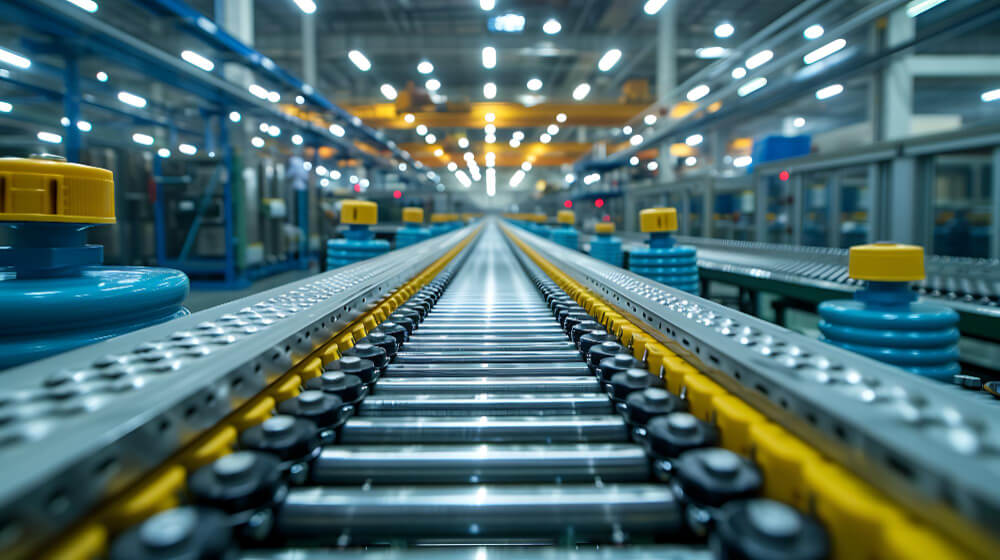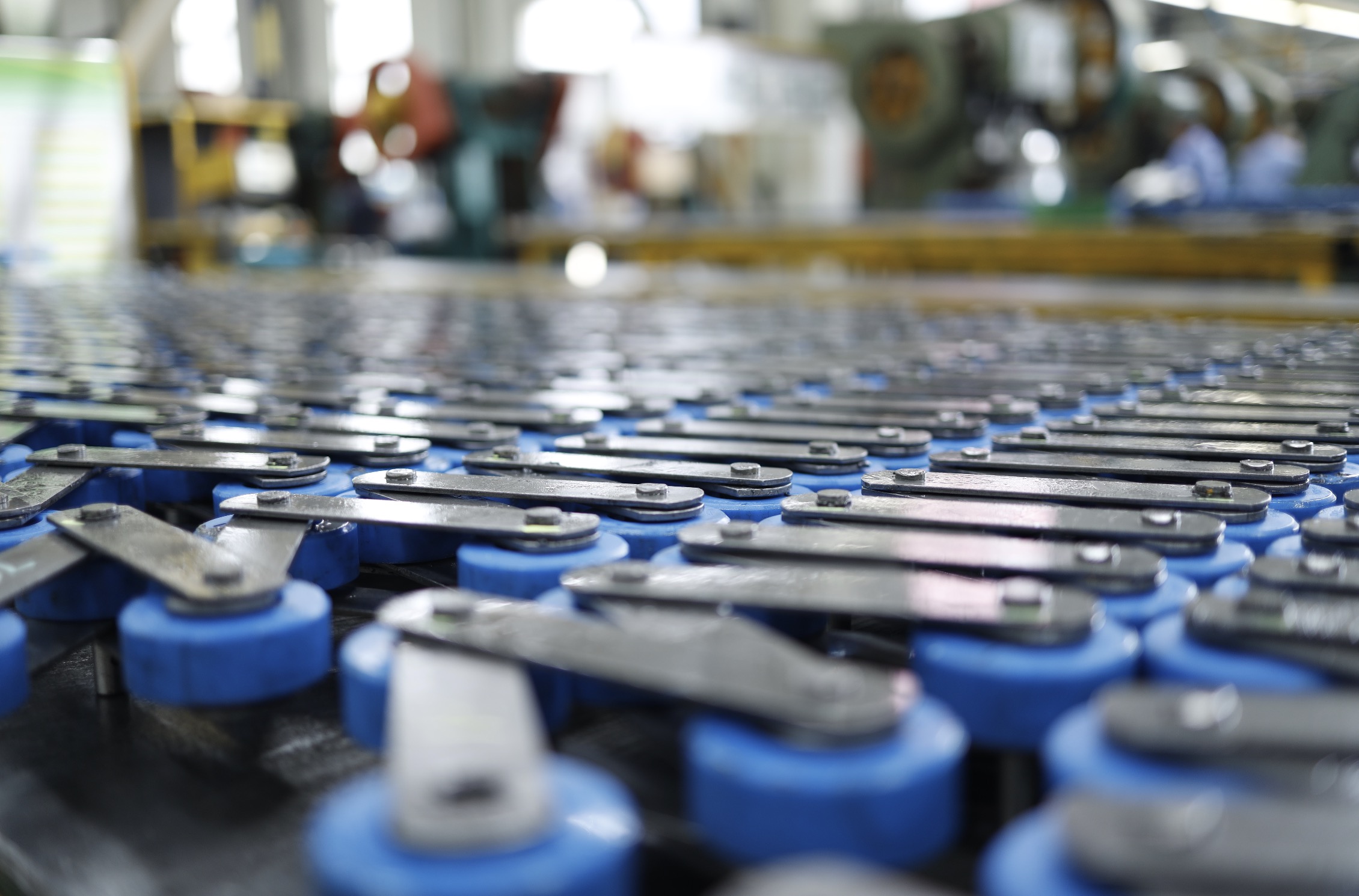Agricultural chains are essential components in farming machinery, ensuring efficient operation and durability under challenging conditions.
These chains are designed to handle various tasks, from harvesting crops to conveying materials, making them indispensable in modern agriculture.
Understanding the types, functions, and maintenance of agricultural chains can help optimize their performance and lifespan.
Read on to explore the comprehensive guide on agricultural chains.
What are agricultural chains?
Agricultural chains are specialized heavy-duty chains used in farming machinery to facilitate various agricultural operations, such as planting, harvesting, and material handling.
These chains are designed to withstand harsh environmental conditions and heavy loads, ensuring reliable performance in the demanding field of agriculture.
They are critical in ensuring the smooth and efficient operation of agricultural equipment, thereby enhancing productivity and reducing downtime.
Functions of Agricultural Machinery Chains
Power Transmission
Agricultural chains play a crucial role in transmitting power from the engine or motor to various parts of the machinery.
This function is essential in ensuring that the different components of the equipment work in harmony, providing the necessary force to perform tasks like plowing, planting, and harvesting.
Material Handling
Chains are also used for material handling in agricultural machinery.
This includes conveying harvested crops, transporting seeds, and managing other agricultural products within the machinery.
Efficient material handling chains ensure that the products are moved smoothly and without damage.
Synchronization
In complex agricultural machinery, synchronization chains ensure that various parts of the equipment operate in unison.
This synchronization is vital for the precise operation of machines like combine harvesters, where timing is crucial for efficient harvesting.
Agricultural Chain Types According to Applications
Soybean harvester chain
Soybean harvester chains are specifically designed for harvesting soybeans, ensuring the smooth operation of the harvester. These chains help in cutting, gathering, and conveying the soybeans, making the harvesting process efficient and effective.
Citrus harvester chain
Citrus harvester chains are used in machinery designed for harvesting citrus fruits like oranges and lemons. These chains are engineered to handle the delicate nature of citrus fruits, ensuring minimal damage during harvesting and transport.
Corn harvester chain
Corn harvester chains are critical components in corn harvesting machinery. They facilitate the cutting and conveying of corn stalks and ears, ensuring a high-efficiency harvesting process.
Rice harvester chain
Rice harvester chains are used in rice harvesting machines to cut and convey rice plants.
These chains are designed to handle the wet and muddy conditions often found in rice fields, ensuring reliable performance.
Combine harvester chain
Combine harvester chains are versatile chains used in combine harvesters, which are multi-functional machines designed to harvest various types of grains.
These chains handle different stages of the harvesting process, from cutting to threshing and cleaning the grains.
Agricultural roller chain
Agricultural roller chains are used in various farming machinery for power transmission and conveying applications.
They are known for their durability and ability to handle high loads, making them suitable for a wide range of agricultural tasks.
Hay conveyor chain
Hay conveyor chains are used in equipment designed to transport hay bales.
These chains ensure the efficient and smooth movement of hay, reducing manual labor and enhancing productivity.
Parts of Agricultural Machinery Chains and Their Functions
Chain Links
Chain links are the primary components of an agricultural chain, forming the continuous loop that transmits power or conveys materials.
They are designed to provide the necessary strength and flexibility for the chain’s operation.
Pins and Bushings
Pins and bushings connect the chain links and allow them to pivot as the chain moves.
These components are crucial for the flexibility and smooth operation of the chain, ensuring minimal friction and wear.
Rollers
Rollers reduce friction between the chain and the sprockets, facilitating smooth movement.
They are essential for high-speed applications and help in prolonging the life of the chain.
Sprockets
Sprockets are toothed wheels that engage with the chain, driving its movement.
They are crucial for transmitting power and ensuring precise timing and synchronization of the machinery components.
Guides
Guides help in directing the chain and maintaining its alignment.
They are essential in preventing chain derailment and ensuring smooth operation.
Pros and Cons of Agricultural Machinery Chains
Durability
Pros: Agricultural chains are designed to be highly durable, and capable of withstanding heavy loads and harsh conditions.
Cons: Without proper maintenance, they can suffer from wear and corrosion, reducing their lifespan.
Versatility
Pros: These chains can be used in a wide range of applications, from power transmission to material handling.
Cons: Different applications may require different types of chains, necessitating careful selection and potentially higher costs.
Maintenance
Pros: Regular maintenance can significantly extend the life of agricultural chains and ensure reliable performance.
Cons: Maintenance requires time and resources, and neglecting it can lead to premature failure of the chains.
Cost
Pros: Agricultural chains are cost-effective solutions for various farming tasks, enhancing productivity.
Cons: The initial cost of high-quality chains can be high, and ongoing maintenance adds to the overall expense.
How long do agricultural machinery chains last?
Agricultural machinery chains typically last between 3 to 5 years, depending on usage, maintenance, and operating conditions.
Factors Affecting Chain Performance and Functionality
Usage Frequency
Frequent use can accelerate wear and tear, reducing the lifespan of the chains.
Maintenance Practices
Regular inspection, cleaning, and lubrication can prolong the life of agricultural chains.
Environmental Conditions
Exposure to harsh conditions, such as moisture, dirt, and chemicals, can lead to corrosion and wear, affecting the chain’s performance and durability.
Quality of Materials
High-quality materials enhance the durability and performance of agricultural chains, making them last longer and perform better under stress.
Cleaning and Maintenance Tips
Regular Inspection
Conduct regular inspections to identify signs of wear, damage, or misalignment. Early detection can prevent major failures and extend the chain’s lifespan.
Proper Lubrication
Lubricate the chains regularly to reduce friction and wear. Use appropriate lubricants that can withstand the operating conditions.
Cleaning
Keep the chains clean to prevent the buildup of dirt, debris, and corrosive substances. Regular cleaning helps maintain the chain’s performance and reduces the risk of corrosion.
Tension Adjustment
Ensure that the chains are properly tensioned. Incorrect tension can lead to premature wear or chain failure.
Key Takeaway
Agricultural chains are vital components in farming machinery, ensuring efficient and reliable operation under various conditions.
By understanding their functions, types, and maintenance requirements, you can optimize their performance and extend their lifespan.
Explore this comprehensive guide to make informed decisions about the agricultural chains that best suit your needs.


